Fruits that start with C are diverse and flavorful, offering a wide range of tastes and nutritional benefits. They are found in various climates around the world, from tropical to temperate zones, and include both sweet and tart varieties.
Many of these C-starting foods are rich in vitamins, minerals, and antioxidants, making them essential components of a healthy diet.
From being used in desserts and snacks to adding flavor to savory dishes, these fruits are versatile in culinary uses. They are also known for their vibrant colors and can be eaten fresh, cooked, or processed into juices and jams.
To know more about the fruit, starting with the letter C, you should look into the many ways people utilize them in cooking. Then, discover that the vegetables often have their names starting with the letter C.
42 Interesting Fruits That Start with C
Prepare to uncover the many fruits that start with C. Make sure to use the filter system to help you identify fruits for dishes, beverages, and garnish.
Additionally, there are even exotic varieties or some considered to be fruit vegetables.
Cocoa
- Exotic
- For Dishes
Cocoa is a fruit that plays a key part in making chocolate, coming from the cacao tree fruit found in Central and South America. Today, most cocoa grows in West Africa, making up over 60% of the world’s supply.
Interestingly, the seeds and the juicy parts around them inside the cocoa pods can be eaten. To make chocolate, these parts are fermented and then dried in the sun to produce the classic chocolate taste.
As for the white flesh, it’s relatively slimy with a touch of tanginess and fruity notes.
Crabapples
- For Dishes
Crabapple is a fruit of small trees from the apple family. While regular apples are sweet and juicy, crabapples are more tart and dry, so they’re not as popular for eating fresh but great for wildlife.
In terms of size, these little apples are around a common cherry. Typically, people use them to make jam, cider, and other products because they have a stronger apple taste.
Cranberry
- For Beverages
- For Dishes
Cranberry is a small fruit growing from evergreen shrub native to the acidic bogs across northeastern North America. These fruits grow low on the ground, and farmers often flood the area to harvest them.
Usually, the berries float to the surface, making harvesting these fruits a breeze. Cranberries are incredibly tart in flavor, which is why people often include sugar in cranberry sauce.
Coconut
- Maldives
- For Beverages
- For Dishes
- National
Coconut is a palm tree fruit, mainly found in Southeast Asia and the Central Indo-Pacific. Surprisingly, what people often enjoy is the seed of the palm, containing water and white meat.
The water of coconut is a refreshing drink, while its mature flesh is savored or dried for snacks. Additionally, its dried shell can turn into charcoal.
To add to that, coconut oil, extracted from this flesh, is a staple in many cooking processes around the world.
Cherry
- For Beverages
- For Dishes
- For Garnish
Cherry is a fruit from the Prunus family, often available in a bright red ripeness. They can be sweet or sour when consumed fresh or added into baking recipes.
Commonly, cherries have several popular sweet types, including Bing, Lambert; and Rainier. As for the sour varieties, great for baking, they are the English Morello, Richmond; and Montmorency.
The meat of cherry is relatively soft and encased around a small hardy seed that contains toxins.
Cantaloupe
- For Beverages
- For Dishes
Cantaloupe is a type of muskmelon from the Middle East, often thought to be from India. It has green skin with golden, juicy flesh and a refreshing taste.
Surprisingly, cantaloupe is one of those fruits that does not ripen further once cut from the vines. It will not mature, nor will it increase in sweetness.
The way to best know if you are selecting a good cantaloupe is to smell it. If it has a sweet smell, it is ready to eat.
Like many of its cousins in the melon family, cantaloupe has a juicy, almost spongy, but crisp texture.
Clementine
- For Beverages
- For Garnish
Clementine is an orange fruit that originated from the spontaneous hybrid of the willow-leaf mandarin orange and the sweet orange. There are three classifications of the clementine fruit.
There is the seedless clementine which is the variety that you may find more readily available. Then, there are normal clementines with ten seeds or less, and the Monreal variety has more than ten seeds.
Cucumber
- For Dishes
- Fruit Vegetables
Cucumber is a fruit from a vine plant of the melon family, first grown in India over 3,000 years ago. It comes in many types worldwide, mainly used fresh or pickled for its neutral taste and crunchy texture.
The fruits of the Slicing cucumber variety are big and have thick skin, making them ideal for fresh consumption. Alternatively, Pickling ones are smaller and kept crisp for canning.
Burpless cucumbers, grown in greenhouses, are long, with thin skin, making them easy to digest.
Common Cardamom
- Exotic
Common cardamom, also known as true cardamom, is a fruit more popularly known as a kitchen spice made from the seed of the cardamom pod. Native to the southern region of India, it is used quite often in Indian cooking.
The seed is a warming spice that has a floral aroma. Cardamom pods are also chewed in India and many South Asian countries as a natural breath freshener.
Cashew
- Exotic
- For Dishes
Cashew is a fruit developed from an evergreen tree that grows natively in Northeastern Brazil and Southeastern Venezuela. The cashew nuts that you can buy at the stores are the seeds of the cashew apples.
Interestingly, the nut of cashew grows right under the fruit instead of being covered with the flesh. Both the seed and the fleshy part of the fruit are edible, with the flesh offering a peppery, sweet, and astringent taste.
Cherimoya
- For Beverages
- For Dishes
Cherimoya is a sweet and soft fruit closely related to soursop and sweetsop. The fruit is native to the southern American region and is thought to have originated in the Andes.
From the outside, cherimoya possesses green skin with a cream-colored sweet and tangy flesh on the inside. Typically, the meaty white flesh is prized for its natural sweetness when ripe.
Aside from consuming it fresh, cherimoya is suitable for freezing to savor it with a spoon like a bowl of ice cream.
Canary Melon
- For Beverages
Canary melon is a golden cantaloupe cultivated in the southern part of Asia. Recognized by its bright yellow skin, the melon has a waxy exterior, indicating its ripeness.
Also, due to the wax, the fruit can last longer after being harvested from the vine. The flesh of the Canary melon is sweet and similar to a soft pear.
Cattley Guava
- Exotic
Cattley guava is a small fruit branching from the common guava family. This species of invasive guava is native to Brazil, boasting fruits of a vibrant burgundy color.
Hoover, the Cattley flesh is white and soft like other guavas.
This fruit’s flavor profile is also striking, with juicy flesh that is tangy and sweet, almost resembling a strawberry, hence its other nickname, strawberry guava.
Caper
- For Garnish
Caper is the common name used to describe the fruiting berries and the edible flowers of the caper shrub. The fruit of this plant is also served with carb-rich food such as bagels to aid digestion.
Capers are usually eaten salted or pickled for a complex profile. People often describe it as floral, lemony, and olive-like.
Cherry Tomato
- For Garnish
- Fruit Vegetables
The cherry tomato is a tomato variation, with the fruit having the size of around a cherry. These tomatoes are a smaller, more abundant variety of vine tomatoes.
Due to their smaller size and thin, soft skin, these smaller tomatoes have a much sweeter, more fragrant flavor.
Chinese Bayberry
- Exotic
Chinese bayberry is a fruit t native to the eastern part of Asia, specifically China’s mountainous, low-acidic regions.
This fruit has a striking bumpy crimson-red skin. Often used to make Chinese bayberry sweet wine, the berries are soft and very tart once ripe.
Because of the texture of the fruit, they are ideal for drying to make delicious treats. The juice of bayberry is bright red and a bit tart but compensated greatly by the high sugar content present in the fruit.
Cluster Fig
- Exotic
- For Dishes
Cluster fig is a popular type of fig native to Australia and tropical Asia. These are small fruits that grow in a cluster of various sizes and colors.
The fruits can be eaten fresh, pickled, or cooked into savory dishes. When the fruit is still green, you can pick them for their tart and astringent flavor to pickle or cure them to soak in Chinese rice wine to make a digestive medicine.
When the fruits turn a bright red and are a bit soft to the touch, they are sweet and tender, perfect to be eaten fresh.
Common Currant
- For Beverages
- For Garnish
Common currant is a fruit native to North America, available in black, white, and red varieties. The black currant is the sweetest, while the red is the most tart, and they can be used in both sweet and savory dishes.
Often, black currants are made into jams and liqueurs, while white and red currants are used in sauces for meat.
Custard Apple
- Exotic
Custard apple is a sweet and sour fruit with a creamy texture much like custard. Part of the Annona family, it’s related to the cherimoya and originates from the Americas, though it’s now grown in tropical Asia.
These sweet fruits are light green on the outside, with the inside boasting slightly white chewy meat. Remember, custard apples also contain hardy black seeds that you should spit out when eating.
Citron
- Exotic
- For Garnish
Citron is a part of the citrus family, having an appearance like a large, fragrant lemon with a more distinct smell. When ripe, the citron turns into a bright yellow color while the peel can be a bit wrinkled.
Grown mainly for its peel and pith, which are rich in essential oils, citron is used to make natural bug-repellent candles by cold-pressing to extract the oil and infusing it into candle wax.
Chayote
- Fruit Vegetables
Chayote is a smaller member of the gourd family. The fruit has a thick green skin that, when cut, exudes a sticky sap that is quite hard to get off.
They are, in fact, often employed as a vegetable in cooking, providing a mild sweetness when sauteed.
Aside from that, frying and boiling are alternative approaches to this soft fruit.
Chinese Quince
- Exotic
Chinese quince is a fruit cultivated in the south and east of China and has been used medicinally for years to treat arthritis. When ripened, quince will have a golden color with the peel being a bit waxy.
The fruit has a complex flavor resembling a pear, apple, and citrus fruit. They are hard and dry when ripe but will turn sweet and soft after a period of frost.
Ciku
- Exotic
Ciku, also known as sapodilla, is a tropical fruit coming from southern Mexico. It has a sweet, custardy flavor that many say is like eating chocolate pudding.
The fruit has a unique texture and a rich brown color, both inside and out. People in hot climates love cooling ciku in the freezer and scooping it out like ice cream for a refreshing treat.
Courbaril
- Exotic
Courbaril is often called the stinking toe plant because of its brown, cylinder-like shape and unique smell. Despite its name, which comes from the odor it releases when opened.
Inside, the fruit reveals a sweet pulp that’s commonly enjoyed raw. This contrasts between its unappealing exterior and delicious interior.
Chokeberry
- For Beverages
Chokeberry is a small, dark fruit known for its strong, tart flavor, which can make your mouth feel dry, hence its name. This berry grows on shrubs in wet woods and swamps across North America.
Commonly, chokeberries are used in juices, jams, syrups, or as nutritional supplements. Despite their sharp taste when raw, they become sweeter and more palatable when cooked.
Chilacayote
- Fruit Vegetables
Chilacayote is a fruit closely related to the squash family, such as pumpkins and cucumbers. When young and green, the chilacayote fruit can be consumed for its crisp flesh.
Often grown for both its edible flesh and seeds, chilacayote is used in various dishes, ranging from sweet desserts to savory stews. It’s especially popular in many regions for making candied treats and traditional dishes during Lent and Easter.
Calamansi
- For Beverages
Calamansi is part of the citrus family, though it is significantly smaller and sourer. It is native and cultivated in many countries in Southeast Asia for its fruits, often used in cooking and making beverages.
This tiny fruit, with its round shape and green to golden-yellow color, packs a tart, tangy flavor like a cross between a lime and an orange.
In the culinary world, calamansi juice is popularly used as a marinade for meats or a zesty addition to sauces and dips. In some cases, the zest is even mixed with sugar syrup to make a drink.
Carambola
- For Garnish
Carambola is a unique star-shaped fruit that grows natively in the tropical regions of southeast Asia. In terms of flavors, carambola is mainly tart and sour with a touch of sweetness, depending on the variety.
When ripe, carambola fruit has a golden color with 5 to 7 ridges along the side. When the fruit is cut horizontally, the shape resembles a star.
Carambola is great for fresh consumption, used in salads, or served as a garnish to add a decorative touch to dishes and drinks.
Changunga
- Exotic
Changunga, also known as a Nance, is a rare and exotic fruit that is not widely known outside its native regions. This tropical fruit is from parts of Central and South America.
The fruit is typically enjoyed fresh but can also be used in juices, smoothies, and culinary dishes to add a tropical flair. It is small in size and has a golden color when fully ripe.
Casimiroa
- Exotic
Casimiroa, also known as white sapote, is a fruit native to Mexico and Central America. This green fruit has a creamy, custard-like flesh that’s sweet.
People tend to consume casimiroa fresh or use it in desserts and smoothies. In traditional medicine, various parts of the Casimiroa tree, including the leaves and seeds, have been used to treat insomnia and anxiety.
Caimito
- Exotic
Caimito is another member of the sapote family native to the isthmus of Panama, where it was domesticated and spread all over Southeast Asia.
The fruit features smooth, purple or green skin. Inside, the fruit holds a star-shaped pattern around its seeds, giving it the nickname “star apple.”
Once pierced through the peel, caimito has a sweet and creamy profile that is best enjoyed chilled or added to snacks.
Camu Camu
- For Beverages
Camu camu is a small, sour berry from the Amazon rainforest, famous for its exceptionally high vitamin C content. This purple fruit comes in the size of a cherry, found on a bushy tree along riverbanks of South America.
People rarely eat it fresh due to its intense tartness; instead, it’s often powdered and added to food or drinks for a nutritional boost.
Cempedak
- Exotic
Cempedak is a tropical fruit similar to jackfruit with bumpy peel and yellow pods when ripe. Cempedak is native to the southeastern Asia region, possessing a sweet and fruity flavor, often compared to a mix of banana and pineapple.
The fruit is oval, with a bumpy green skin that turns slightly yellow when ripe. Cempedak is commonly enjoyed fresh, fried, or used in desserts for its rich taste and creamy texture.
Carob Fruit
- For Dishes
Carob fruit is a sweet, edible pod from the carob tree, which is native to the Mediterranean region. Each pod is brown, leathery, and filled with sweet, sticky pulp and hard seeds.
People often use carob as a chocolate substitute because it has a similar flavor but minus the caffeine and fat elements. It’s processed into powder or syrup and used in baking, cooking, and making sweets.
Cape Gooseberry
- For Garnish
Cape gooseberry is a small, round fruit encased in a papery husk, known for its vibrant yellow-orange color and sweet-tart flavor. Native to South America, this fruit thrives in warm climates.
The taste is a unique blend of sweetness and tartness, making it a popular choice for desserts, jams, and as a fresh snack. Once mature, the berries come with an outer husk resembling a lantern.
Calamondin
- For Beverages
- For Garnish
Calamondin is a small citrus fruit with a flavor combining the profiles of sour oranges and limes, making it quite tart. It’s widely grown and used in Southeast Asia and has become popular for its ornamental value.
The fruit is tiny, round, and orange when ripe, often used in drinks, marmalades, and as a seasoning thanks to its acidic punch. It’s also used in traditional medicine and as a natural cleaner due to its acidic properties.
Calabash
- Exotic
Calabash is a large fruit that grows on vine plants and is used mainly for its hard shell rather than eaten. When dried, the shell becomes a vessel for crafting into bowls, utensils, musical instruments, and decorative items.
Although the fruit’s flesh is not commonly consumed due to its bitter taste, the calabash tree is mainly cultivated to produce durable goods.
Cocoplum
- Exotic
Cocoplum is a tropical fruit plant native to coastal areas in the Caribbean, Central and South America. It produces small, round fruits varying in color from white to purple.
Known for their sweet and slightly tart flavor, the fruit is edible and sometimes made into jams or eaten raw. Cocoplum is also valued for its medicinal properties, whereas traditional uses include treating various ailments.
Cumquat
- For Beverages
Cumquat is a small, round, or oval-shaped fruit similar to oranges but much smaller in size. Known for their sweet peel and tart flesh, cumquats are often eaten whole, cooked, or used in marmalades and jelly recipes.
This fruit thrives in warm climates and is often grown ornamentally in gardens and pots.
Cupuaçu
- Brazil
- Exotic
- For Beverages
- National
Cupuaçu is a tropical rainforest fruit native to the Amazon. It’s related to cacao, having a thick, hard outer shell encasing a soft, fragrant white pulp.
This pulp is cherished for its unique flavor, often described as a mix of chocolate, banana, and pineapple. In addition to being consumed fresh, the fruit’s pulp is widely used in juices, jams, and desserts.
Cloudberry
- For Beverages
Cloudberry is a rare, amber-colored fruit found in cooler regions of the Northern Hemisphere. This berry thrives in wetlands and peat bogs, producing a single flower and a single berry on a short stem.
Cloudberries are highly valued for their unique, tart flavor, which becomes sweeter and more complex upon ripening. These berries are often used in jams, desserts, and traditional Nordic and Arctic dishes.
Courgette
- For Dishes
- Fruit Vegetables
Courgette, also known as zucchini, is a summer squash usually harvested when still immature at about 15 to 25 cm. Originating from the Americas, courgettes boast a soft, edible skin and flesh with a mild flavor, often used in salads, as a side dish, or incorporated into various recipes.
They can be eaten raw or cooked, and their flowers are also edible, often stuffed or fried as a delicacy.
What Are Some Ways People Utilize These C-starting Fruits?
There are many ways to turn these fruits into a delicious meal, all you need is a few hints to pull it off:
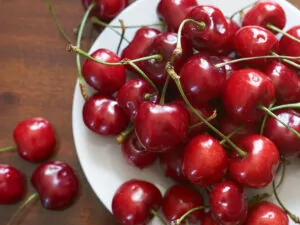
Fresh Consumption
Many fruits are enjoyed fresh, offering a direct taste of their natural sweetness, tartness, or juiciness.
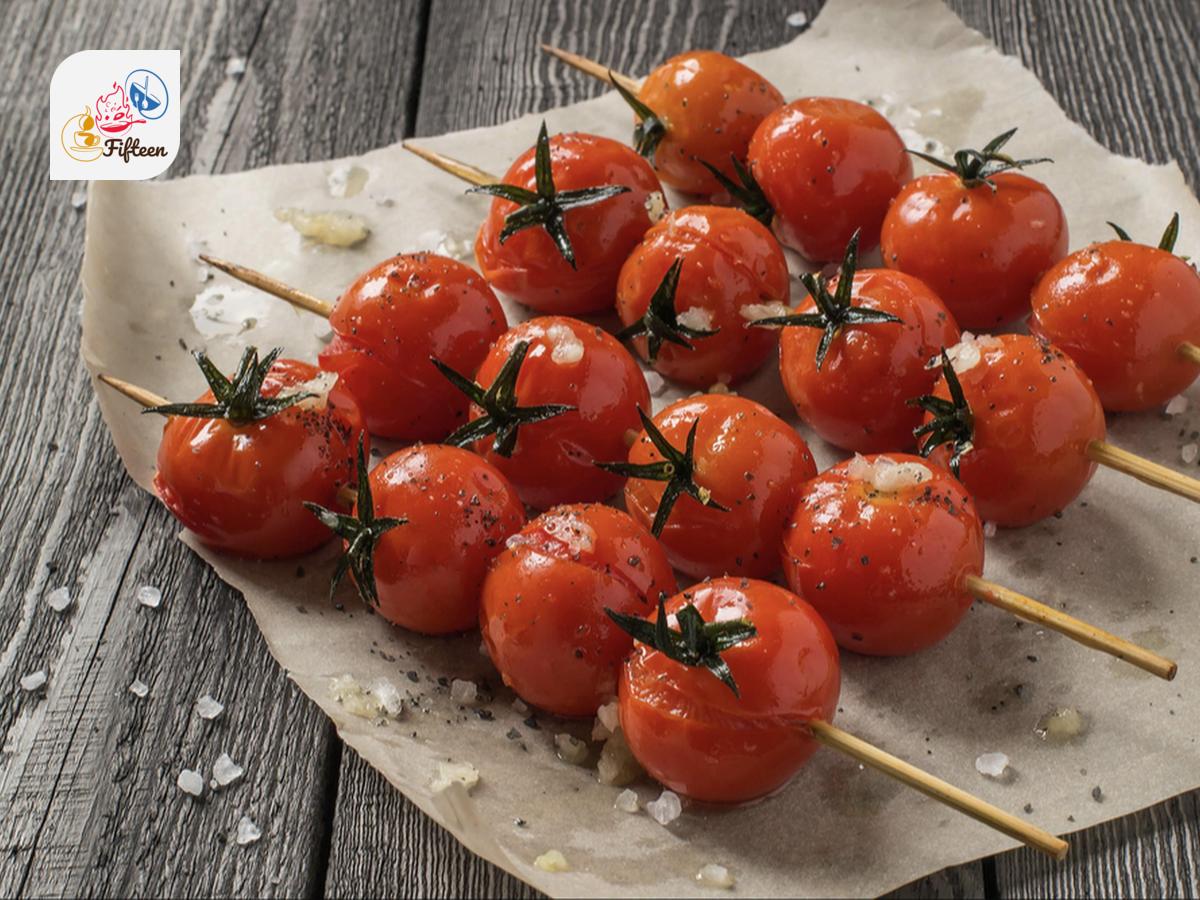
Cooking and Baking
Fruits are often cooked or baked to enhance their flavors, and incorporated into desserts, pies, jams, and sauces.
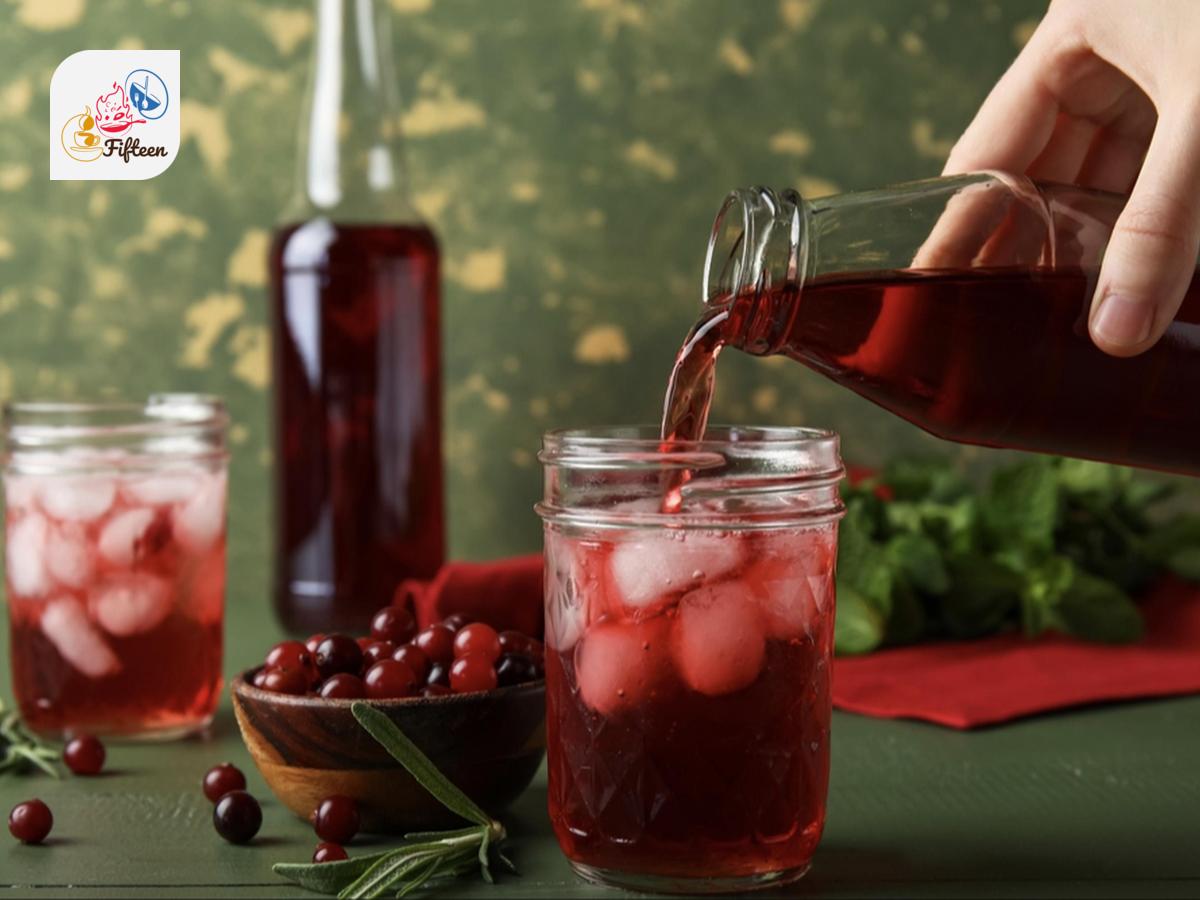
Juicing
Extracting juice from fruits for refreshing beverages, which can be consumed directly or used as a base for cocktails and smoothies.
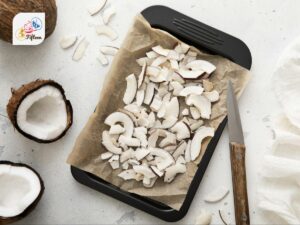
Drying or Dehydrating
Fruits can be dried or dehydrated to preserve them, concentrating their flavors and making them convenient for snacking or use in cooking.
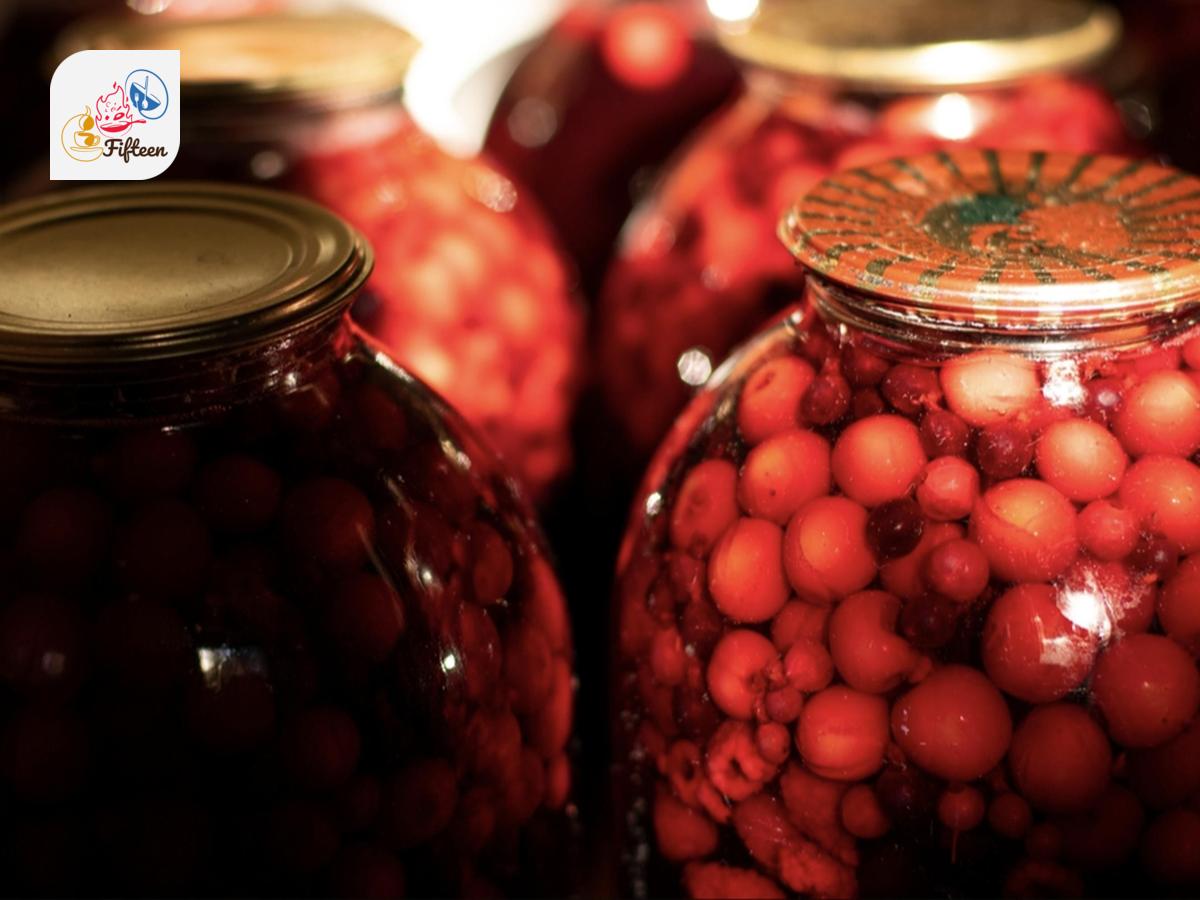
Fermenting
Some fruits undergo fermentation to produce alcoholic beverages and vinegar or enhance their flavors for culinary uses.
Now, let’s find out some vegetables that have their name starting with C, to further expand your knowledge about these greens.
What Are Some Vegetables That Start with C?
These are the veggie options starting with C just you can have a little peek into the wide range of options:
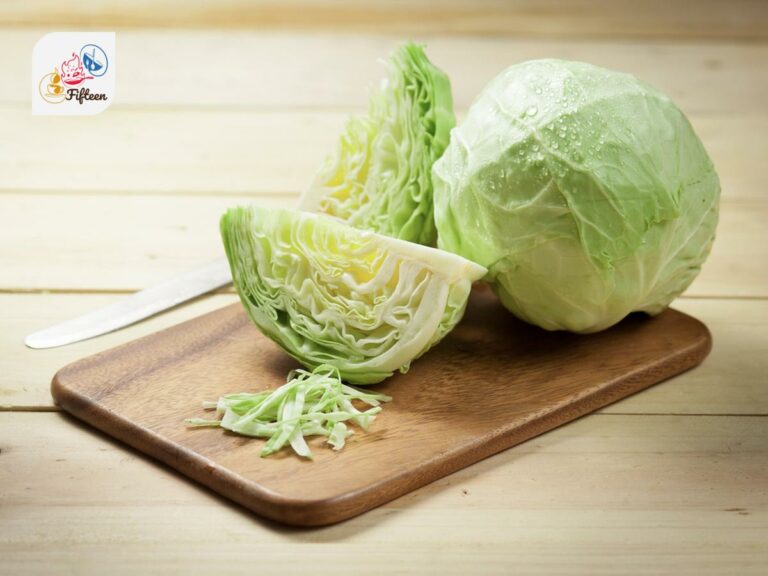
Cabbage
Cabbage is a leafy green, red, or white vegetable that grows into a spherical shape. It’s often chopped and used in salads, soups, and stews.
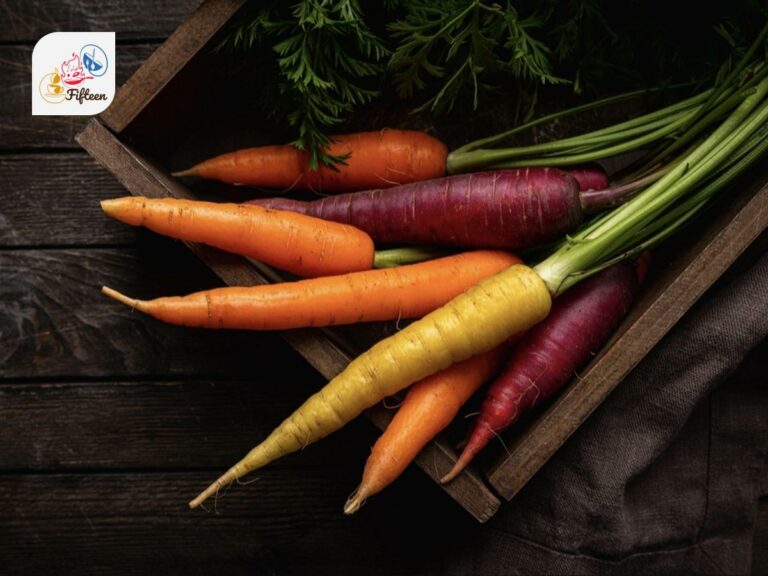
Carrot
Carrot is a root vegetable known for its bright orange color, though it comes in other colors like purple, red, and yellow. It’s crunchy when raw and commonly used in both sweet and savory dishes.
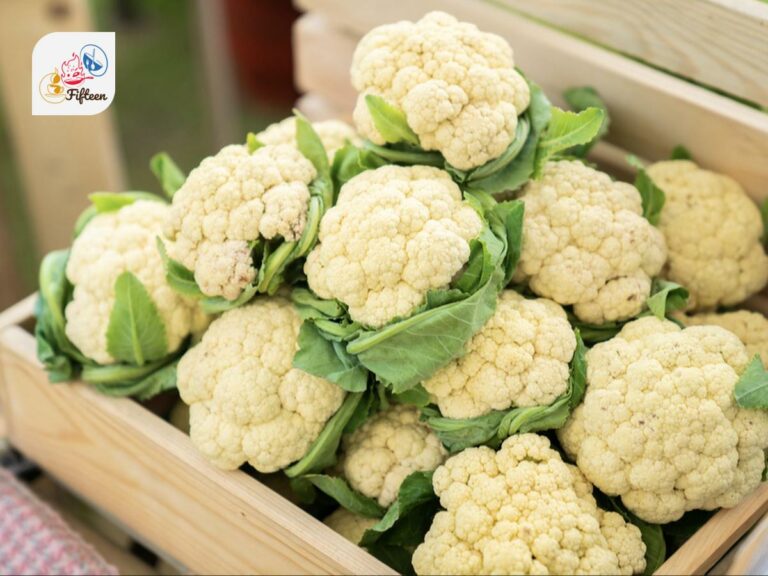
Cauliflower
Cauliflower is a white, flowering vegetable that belongs to the same family as broccoli and cabbage. It’s versatile in cooking and often used as a low-carb substitute for grains.
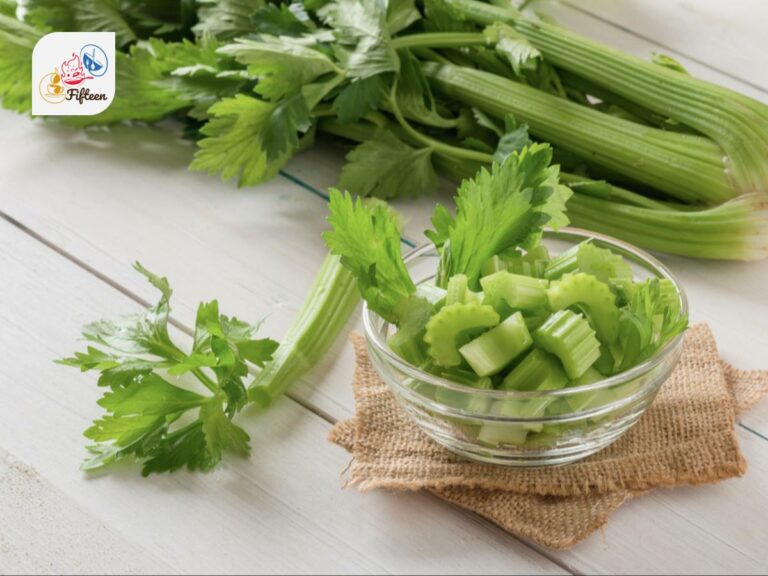
Celery
Celery is a green vegetable with long, fibrous stalks and leaves at the top, known for its crunchy texture and mild, slightly peppery flavor. It’s commonly used in salads, soups, and as a flavoring for dishes.
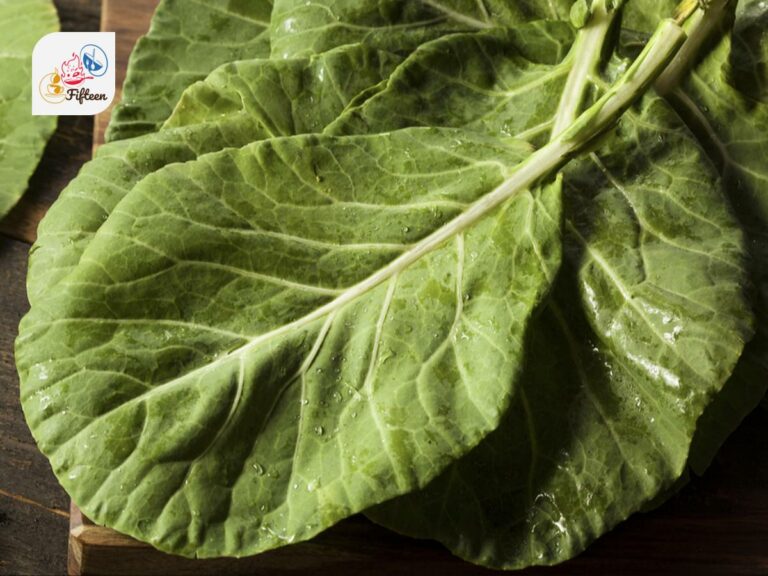
Collard Green
Collard green is a type of green vegetable with large, dark-colored, edible leaves. It’s often cooked for a long time until tender and flavored with various ingredients like onions and bacon.
If you enjoyed learning about new fruits and vegetables that start with a C, share them with other people. Leave your thoughts about these fruits in the comment section.
Additionally, you should uncover more letter in the alphabet, ranging from A to Z, to get to know more fruity choices.


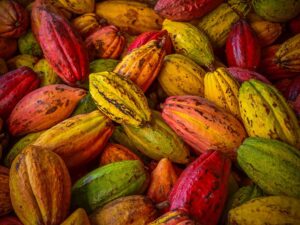
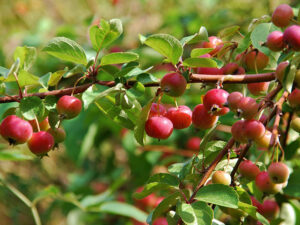
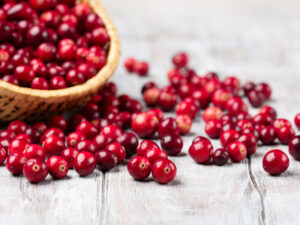
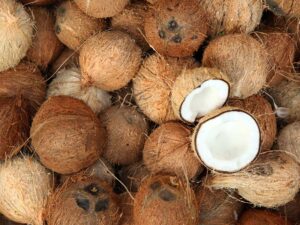
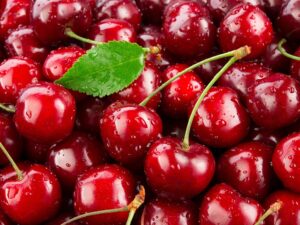
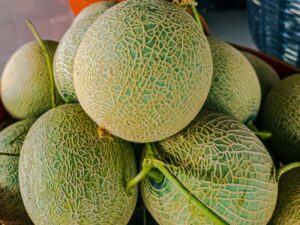
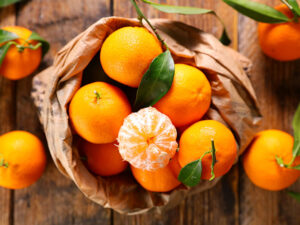
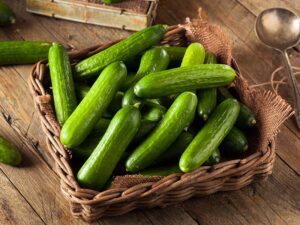
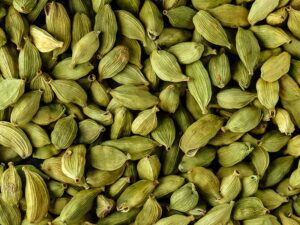
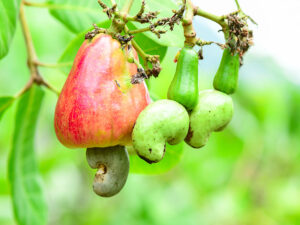
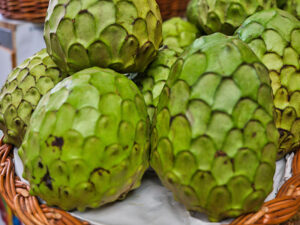
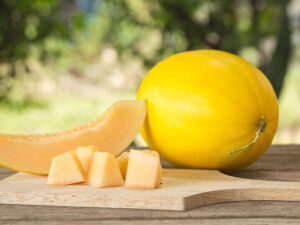
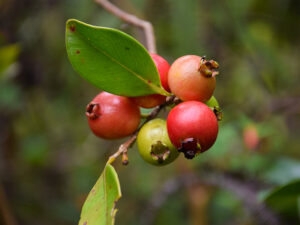
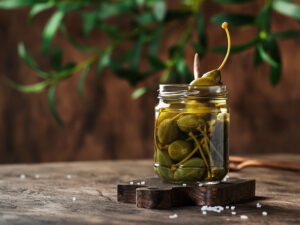
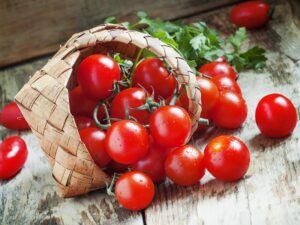
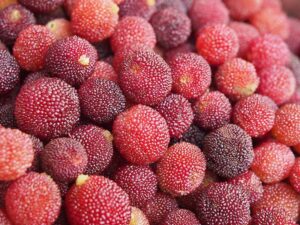
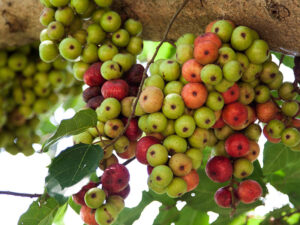
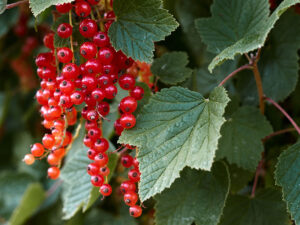
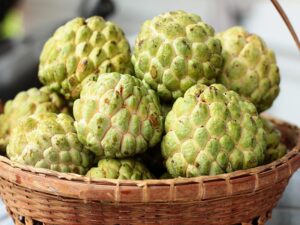
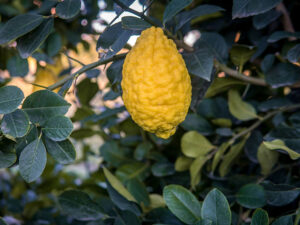
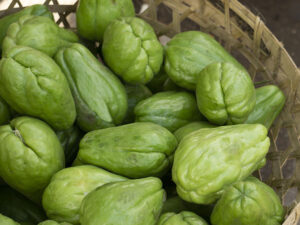
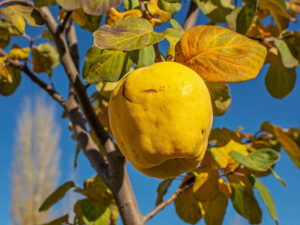
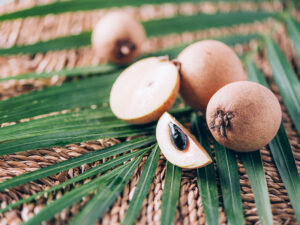
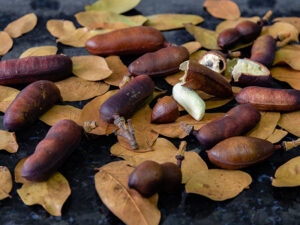
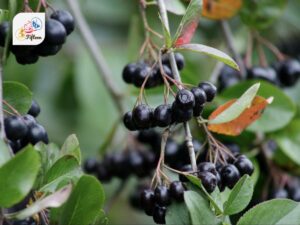
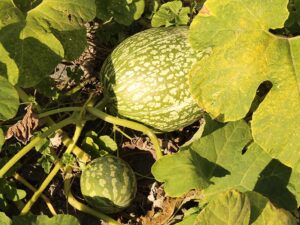
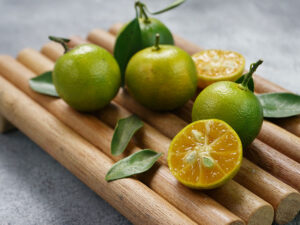
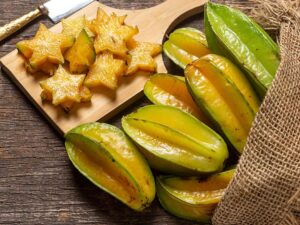
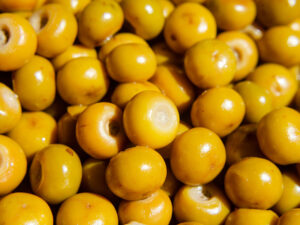
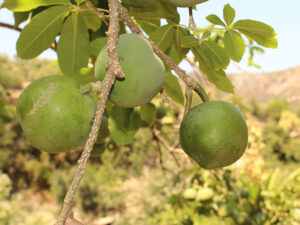
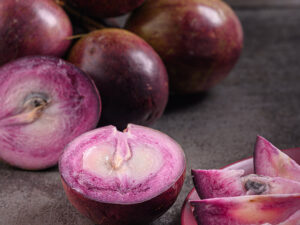
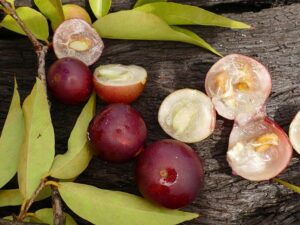
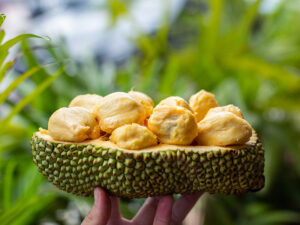
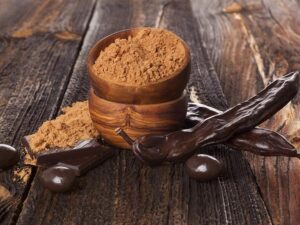
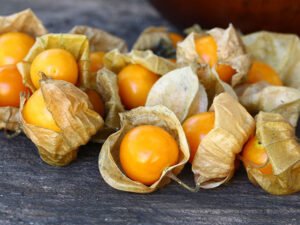
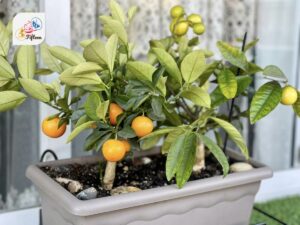
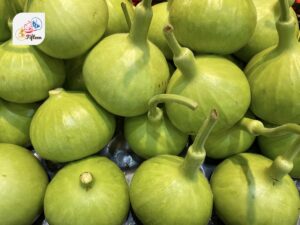
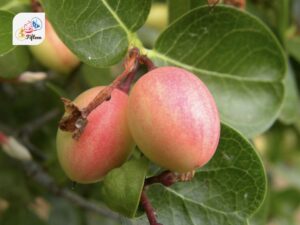
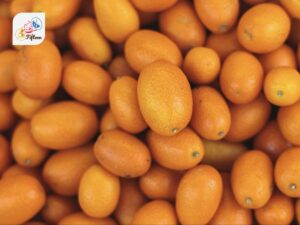
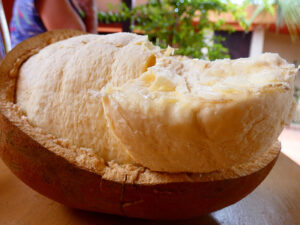
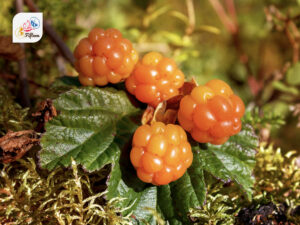
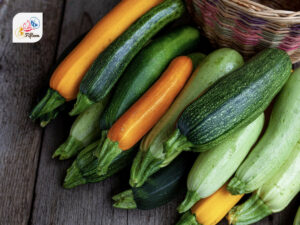
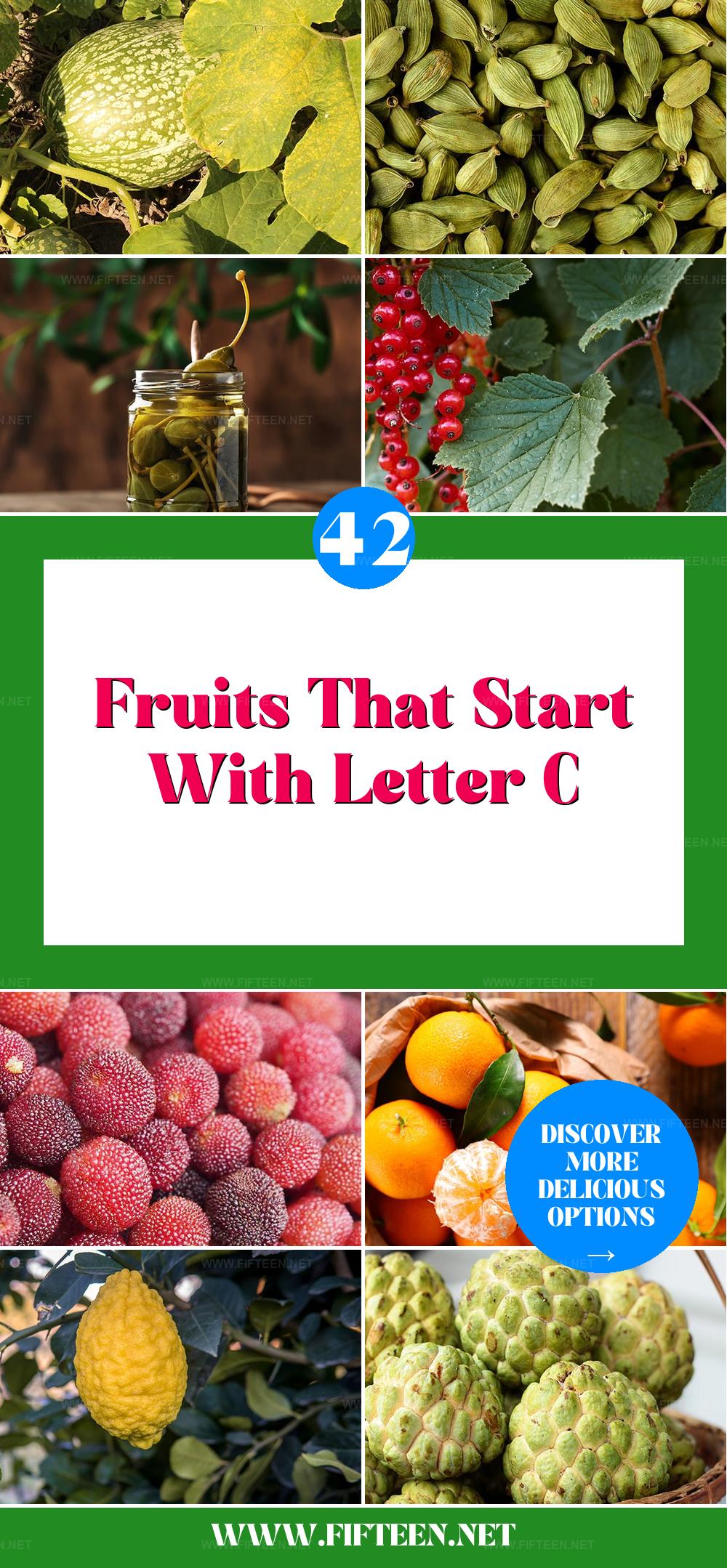
Jamie Scott
Editor in Chief, Senior Content Writer
Expertise
Home Cooking, Meal Planning, Recipe Development, Baking and Pastry, Food Editor, Cooking-video Maker, Western Food Evaluation Expert
Education
Le Cordon Bleu College of Culinary Arts
Local Community College, New York, NY
Jamie Scott is a skilled culinary expert and content creator specializing in Western cuisine. With over 15 years in the culinary field and formal training from Le Cordon Bleu, Paris, Jamie deeply understands how to blend nutrition with delicious flavors. His passion for cooking matches his commitment to making healthy eating accessible and enjoyable.
On Fifteen.net, Jamie brings a fresh perspective to classic dishes and beverages, offering readers insightful recipes, cooking tips, and a fresh view on meal planning that emphasizes taste, health, and simplicity.